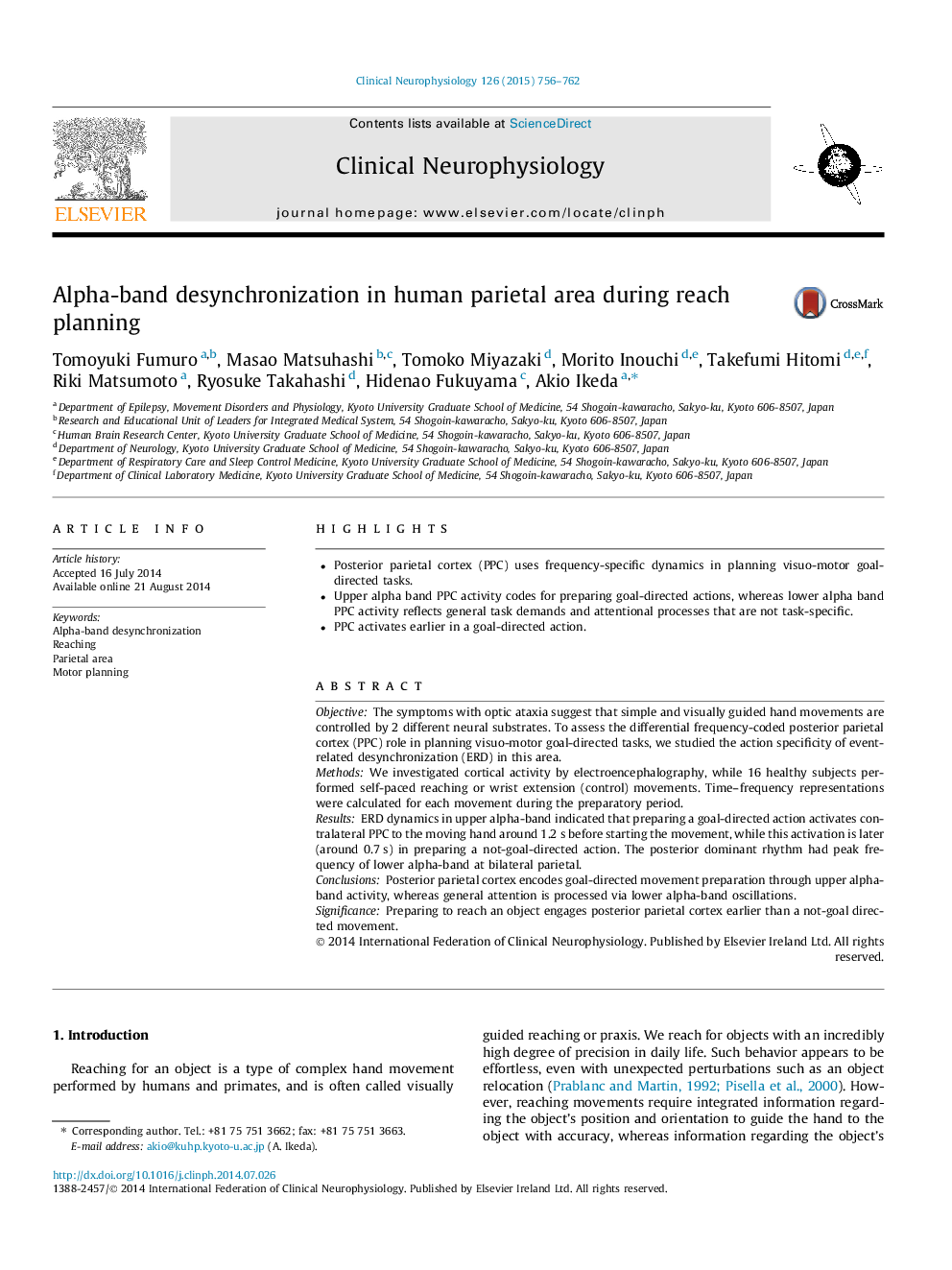| Article ID | Journal | Published Year | Pages | File Type |
|---|---|---|---|---|
| 3043004 | Clinical Neurophysiology | 2015 | 7 Pages |
•Posterior parietal cortex (PPC) uses frequency-specific dynamics in planning visuo-motor goal-directed tasks.•Upper alpha band PPC activity codes for preparing goal-directed actions, whereas lower alpha band PPC activity reflects general task demands and attentional processes that are not task-specific.•PPC activates earlier in a goal-directed action.
ObjectiveThe symptoms with optic ataxia suggest that simple and visually guided hand movements are controlled by 2 different neural substrates. To assess the differential frequency-coded posterior parietal cortex (PPC) role in planning visuo-motor goal-directed tasks, we studied the action specificity of event-related desynchronization (ERD) in this area.MethodsWe investigated cortical activity by electroencephalography, while 16 healthy subjects performed self-paced reaching or wrist extension (control) movements. Time–frequency representations were calculated for each movement during the preparatory period.ResultsERD dynamics in upper alpha-band indicated that preparing a goal-directed action activates contralateral PPC to the moving hand around 1.2 s before starting the movement, while this activation is later (around 0.7 s) in preparing a not-goal-directed action. The posterior dominant rhythm had peak frequency of lower alpha-band at bilateral parietal.ConclusionsPosterior parietal cortex encodes goal-directed movement preparation through upper alpha-band activity, whereas general attention is processed via lower alpha-band oscillations.SignificancePreparing to reach an object engages posterior parietal cortex earlier than a not-goal directed movement.
